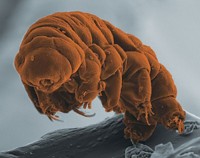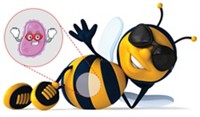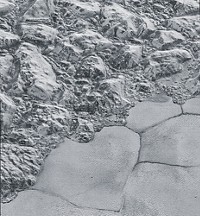Advertisement
Grab your lab coat. Let's get started
Welcome!
Welcome!
Create an account below to get 6 C&EN articles per month, receive newsletters and more - all free.
It seems this is your first time logging in online. Please enter the following information to continue.
As an ACS member you automatically get access to this site. All we need is few more details to create your reading experience.
Not you? Sign in with a different account.
Not you? Sign in with a different account.
ERROR 1
ERROR 1
ERROR 2
ERROR 2
ERROR 2
ERROR 2
ERROR 2
Password and Confirm password must match.
If you have an ACS member number, please enter it here so we can link this account to your membership. (optional)
ERROR 2
ACS values your privacy. By submitting your information, you are gaining access to C&EN and subscribing to our weekly newsletter. We use the information you provide to make your reading experience better, and we will never sell your data to third party members.
Environment
Newscripts
Speck-Sized Water Bears Don’t Just Die In The Vacuum Of Space
by Ivan Amato
September 22, 2008
| A version of this story appeared in
Volume 86, Issue 38

In 1965, at what is now known as the Johnson Space Center, a National Aeronautics & Space Administration test subject unwittingly wearing a leaky space suit entered a pressure chamber where he accidentally experienced exposure to a near equivalent of the vacuum of space. “He remained conscious for about 14 seconds, which is about the time it takes for O2-deprived blood to go from the lungs to the brain,” a NASA report later specified. Engineers frantically repressurized the chamber enough to revive the subject, who later noted that his “last conscious memory was of the water on his tongue beginning to boil.”
That subject wouldn’t have lasted more than a few minutes of the 10-day exposure to low-orbital conditions that 1,000 period-sized creatures known as WATER BEARS were subjected to aboard a European Space Agency research platform that flew last year. On Sept. 9, a team of researchers in Germany and Sweden reported online in Current Biology (2008, 18, R729) the results of the space exposure study. Astonishingly, three of the water bears, also known as tardigrades, endured both the vacuum of space and the ultraviolet and cosmic ray exposure that would have offed just about any other creature from Earth. “How these animals were capable of surviving... remains a mystery,” the researchers note. Water bears are the first animals known to survive being naked in space.
Tardigrades, whose name means slow walkers, are rotund microanimals that live in places such as moist moss beds. They have four pairs of legs, each capped with bearlike claws used for grabbing onto algal cells and other diminutive viands. To those who love them, such as biologist Robert Goldstein of the University of North Carolina, Chapel Hill, they are “adorable.” He and other tardigrade researchers are captivated by the creatures’ “cryptobiologic” states in which they live without water for years and completely shut down their metabolism. “They can survive being chilled below 1 K,” Goldstein notes with some pride.
These tougher-than-nails traits made K. Ingemar Jönsson of Kristianstad University, in Sweden, and his collaborators wonder whether water bears might be able to survive direct exposure to the space environment. To test that out, the researchers packed sets of about 30 desiccated water bears into pill-box-sized sample carriers and sent them into orbit. The experiment starred two tardigrades species and their eggs exposed either only to the vacuum of space or to the vacuum plus one of two spectral ranges of UV radiation in space, the most extensive one ranging from 116.5 to 400 nm.
Before the flight of the tardigrades, only bacteria and lichens had survived the double-whammy of space vacuum and radiation. To be sure, the trip was rough on the water bears. But when the researchers retrieved the sample carriers and rehydrated their teeny passengers, they saw that some of the microanimals were capable of “coordinated leg movements,” the operational definition of survival here.
The vacuum alone was no sweat: The water bears in the vacuum-only sample carriers didn’t seem to notice the complete absence of an atmosphere. The addition of radiation exposure reaped carnage, but it was not total, and many of the little buggers succumbed only after first transiently reviving on the ground upon rehydration. Most astonishing were those three hearty individuals that made it through the harshest conditions to kick their feet on another day. Jönsson conjectures that the animals’ DNA might have unusual configurations that make it damage-resistant.
When asked if the results mean space could be riddled with alien creatures, like plankton in a cosmic sea, Jönsson is quick to quash the notion. “Remember,” he notes, “under space conditions an organism can only survive, at best; it cannot reproduce.” Especially if it notices before everything goes black that its saliva is beginning to boil.
Ivan Amato wrote this week's column. Please send comments and suggestions to newscripts@acs.org.





Join the conversation
Contact the reporter
Submit a Letter to the Editor for publication
Engage with us on Twitter